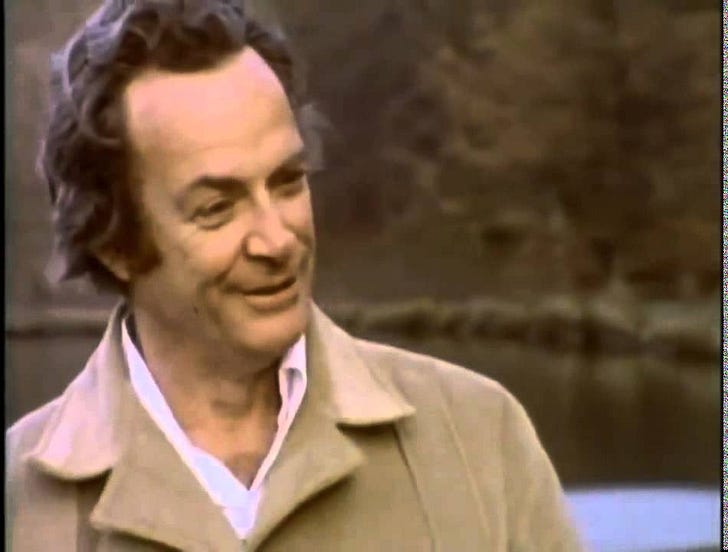Many people have written many thousands of words about the difference between knowledge and understanding, but I think Richard Feynman nails it here:
You can know the name of a bird in all the languages of the world, but when you’re finished, you’ll know absolutely nothing whatever about the bird… So let’s look at the bird and see what it’s doing – that’s what counts. I learned very early the difference between knowing the name of something and knowing something.
Feynman’s insight is sometimes used to belittle the idea that knowing what things are called is useful. Of course, I agree that simply knowing the name of something is quite different to apprehending the ‘thing itself’. Knowing that Albert Einstein came up with the special theory of relativity tells you “absolutely nothing whatever” about what the theory means. That second kind of knowing – understanding if you prefer – takes far more knowledge. The more you know about a thing, the better your understanding. The more you understand it, the better you’ll know it.
But even though knowing the name of something may be a very limited form of knowledge, does that mean learning names and labels isn’t worth the effort?
An ongoing debate in English teaching centres around whether it’s worth knowing the metalinguistic terms we use to discuss language; this includes parts of speech – nouns, verbs etc. – as well as increasingly abstract ideas like the difference between a phrase and a clause, or terms like conjugation and declension. Many people ask, quite reasonably, why you might need to know any of these vocabulary items in order to be able to read and write. And of course you don’t. It’s perfectly possible to be able to identify a gerund or the subjunctive and still “know absolutely nothing whatever” about how to write. And the reverse is obviously true too: many people can write beautifully despite knowing little or nothing about the subjunctive mood or the passive voice.
So what’s the point?
It’s worth watching a clip of the interview from which the Feynman quote is taken:
Crucially, he goes on to say, “knowing the names of things is useful if you want to talk to somebody else – so you can tell them what you’re talking about.”
And this is the point. We use names and labels for reasons of expediency. While I can say, “the theory that determined that the laws of physics are the same for all non-accelerating observers, which shows that the speed of light within a vacuum is the same no matter the speed at which an observer travels,” it’s quicker and easier to say “Einstein’s special theory of relativity”. Likewise, I can say, “You can use a piece of punctuation that looks like a dot floating above a comma to connect two bits of a sentence if both bits could make sense on their own and were also closely related.” But this is confusing and time consuming. How much more efficient would it be if I could say, “A semicolon connects two closely related independent clauses”? Not only is this more straightforward, it’s less ambiguous.
Knowing the names of things is insufficient, but it is, perhaps, necessary for clear communication. And what is teaching if it’s not clear communication?
The trick, as Feynman reminds us, is to make sure we don’t fool ourselves into thinking we know more than we do. Knowing “when you know and when you don’t know, and what it is you know and what it is you don’t know” is the work of a lifetime.





I’m reminded of the way grammatical terms are treated in The Writing Revolution method. The method doesn’t spend a lot of time on defining or teaching grammatical terms—it’s more of a functional approach. If a sentence lacks a subject, the teacher might say “How do we know who is doing this?” If it lacks a predicate, the teacher might say, “How do we know what they’re doing?” At some point, of course, it’s useful for students to know terms like subject and predicate, but initially it could just be confusing.
On the other hand, The Writing Revolution method does introduce terms like “appositive,” which are relatively obscure. An appositive is a phrase describing a noun. In the sentence “John, a good student, did well on the test,” the phrase “a good student” is an appositive. The Writing Revolution highlights the structure because it is one that appears frequently in written text and rarely in oral language. It highlights the TERM “appositive” because it gives teachers a shorthand term to communicate with students. If a sentence is dull and uninformative, the teacher can suggest adding an appositive — or simply write “app” — and the student will know what the teacher is asking for.